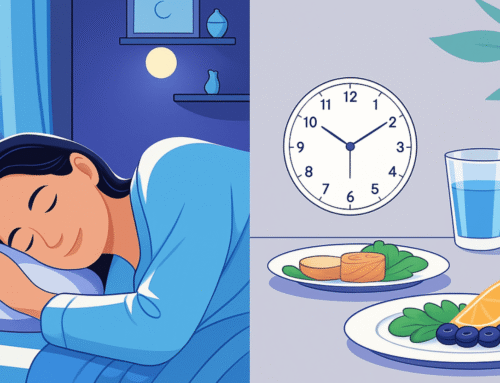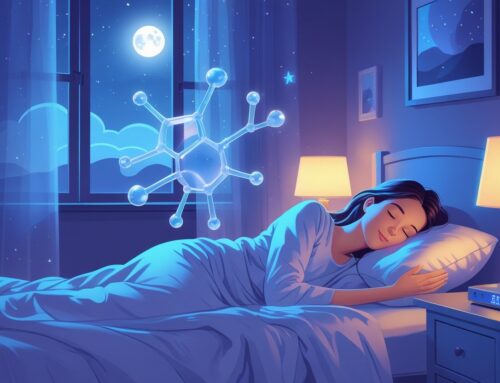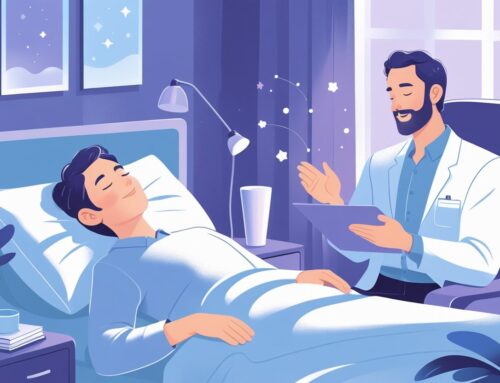Sleep and dreams play a big role in keeping the brain and body healthy. While you sleep, the brain stays active, especially during REM sleep, when most vivid dreams happen. These dreams are more than random pictures in your head. They help organize memories, deal with emotions, and encourage creativity.
Each stage of sleep has its own purpose. Some stages help strengthen skills, others store important memories, and some balance mood. The way you sleep and dream has a direct effect on both your mind and body. It shapes how well you learn, how steady your emotions are, and even your long-term health.
Knowing how sleep and dreams work together can guide you toward better rest. Simple habits, like building a calm bedtime routine and creating a good sleep environment, can support these natural brain processes. With consistent rest, nights feel more restorative and days become clearer and more focused.
Key Takeaways
- Sleep helps the brain sort memories and emotions.
- Dreams mostly happen during REM sleep and support creativity.
- The quality of sleep affects both mental and physical health.
- A supportive and comfortable mattress enhances sleep quality, creating a steady and restful environment that allows dreams to feel clearer, longer, and more vivid.

What Are Sleep and Dreams?
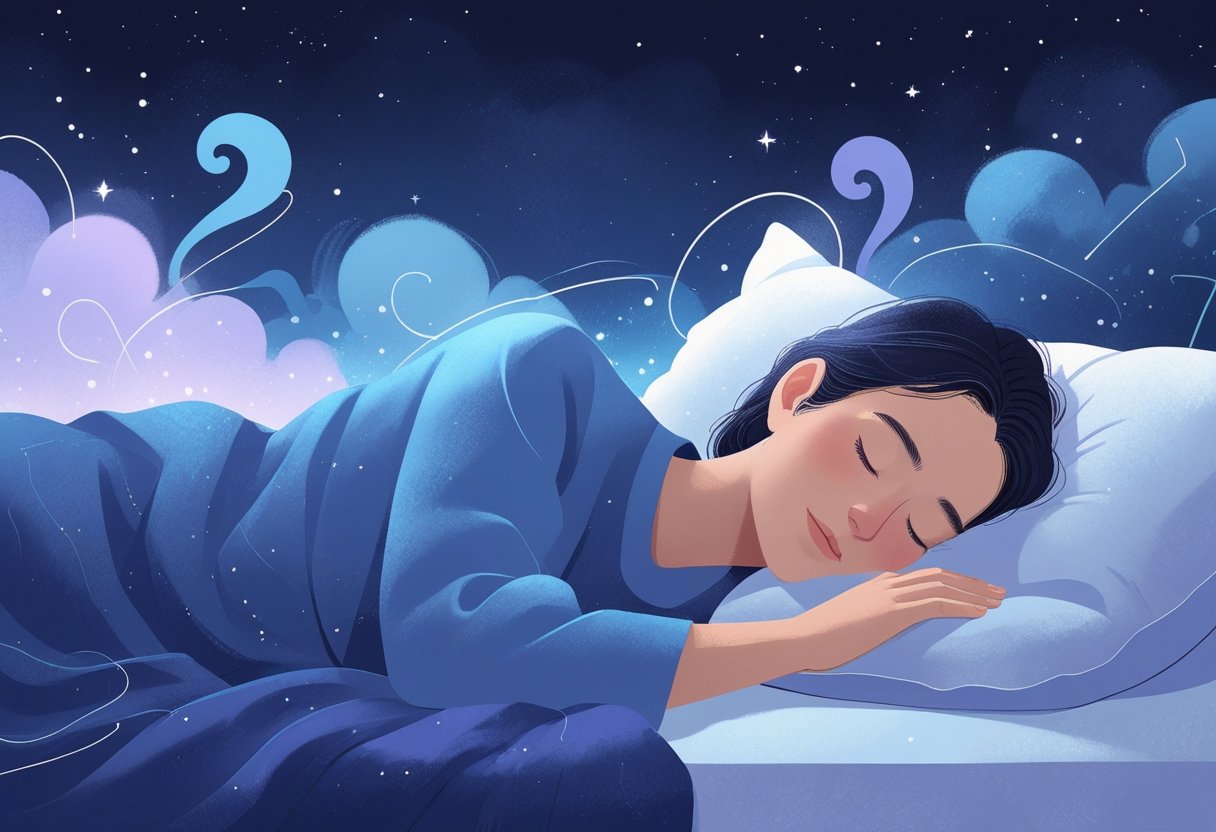
Sleep is a natural process with different stages, each is important in rest and brain function. Dreams happen during specific parts of sleep, involving vivid images and emotions. Understanding when dreams occur, what they are, and the stages of sleep helps explain why dreaming is a normal part of nightly rest.
Defining Sleep and Its Stages
Sleep has two main types: non-REM and REM sleep. Non-REM has three steps, starting with light sleep and moving into deep rest. Deep sleep is when the body repairs itself, restores energy, and supports the immune system. REM sleep means rapid eye movement. This is when most dreaming takes place, and the brain is almost as active as when awake. It plays a key role in memory, learning, and emotional balance.
A person usually cycles through these stages four to six times a night. REM sleep becomes longer in the second half of the night. Together, these cycles give the brain and body what they need to recover and prepare for the day.
What Is a Dream?
A dream is a mix of images, emotions, and thoughts that appear during sleep. They feel real in the moment but are created by the brain. Most dreams happen from the dreamer’s perspective, pulling in people, places, and feelings tied to their life. Dreams can be strange or familiar. Some stay clear in memory, while others fade within minutes of waking up. People may dream several times each night, though only a few are remembered. These experiences blend real-life moments with imagination, creating unique stories in the mind.
How and When Do Dreams Occur?
Dreams mainly take place during REM sleep. At this stage, the brain is very active, but the body stays still. REM repeats a few times each night, especially in the later hours before waking up. A single dream can last from just a few seconds to around 20 minutes.
REM dreams are usually more colorful and emotional. In contrast, dreams that happen in non-REM sleep are lighter and closer to regular thoughts or memories. During all of this, the brain works through emotions, information, and daily experiences, though scientists are still unsure of the exact reason behind it.
Dreaming is a normal part of brain activity. It allows the mind to process life while the body gets the rest it needs.
How Dreams Work: The Neuroscience of Dreaming
Dreams happen when the brain creates vivid experiences disconnected from the outside world. They involve complex brain activity during different stages of sleep, connected to memory and emotions. Knowing when dreams happen and how the brain forms them helps explain their nature and purpose.
Brain Activity During Dreaming
Dreams mostly appear during REM (Rapid Eye Movement) sleep but can also happen in other stages. In REM sleep, brain activity looks similar to being awake, especially in areas that process visuals and emotions. The occipito-temporal cortex, which handles visual images, becomes very active. At the same time, areas involved in reasoning and self-control, like the prefrontal cortex, are less active. This helps explain why dreams feel real but often don’t follow logic. Brain scans also show more activity in limbic regions, which deal with emotions.
This combination of active sensory and emotional centers with lower logical control creates the vivid, sometimes strange stories we experience in dreams.
REM vs. Non-REM Dreams
REM sleep is the stage where the clearest, story-like dreams happen. These dreams include images, movement, sound, and emotions that resemble waking life. The brain’s EEG patterns during REM look like those seen when awake, which is why researchers focus on this stage.
Dreams in non-REM sleep, especially deep sleep, tend to be less detailed and more broken up. They may not have the clear story or sensory detail of REM dreams. Still, some complete dreams can come from later stages of non-REM sleep, showing that the brain can create dream experiences outside of REM sleep.
Both REM and non-REM dreams share traits but differ mainly in how vivid they are, their structure, and how connected the dreamer feels to what’s happening.
Dream Formation and Memory
Dreams build on memories, emotions, and recent experiences. Sleep helps the brain process and store information, combining pieces of memories into new scenarios. Memory areas like the medial temporal lobe stay active during REM, supporting this process. Dreams are not random images. They often show the brain organizing thoughts and feelings, which is why personal memories and emotions appear in dreams.
The ability to imagine and visualize is important for dreaming. Studies show children develop more complex dreams as their visual and spatial skills grow. Damage to certain brain areas can reduce or stop dreams, showing how mental imagery is key in forming them.
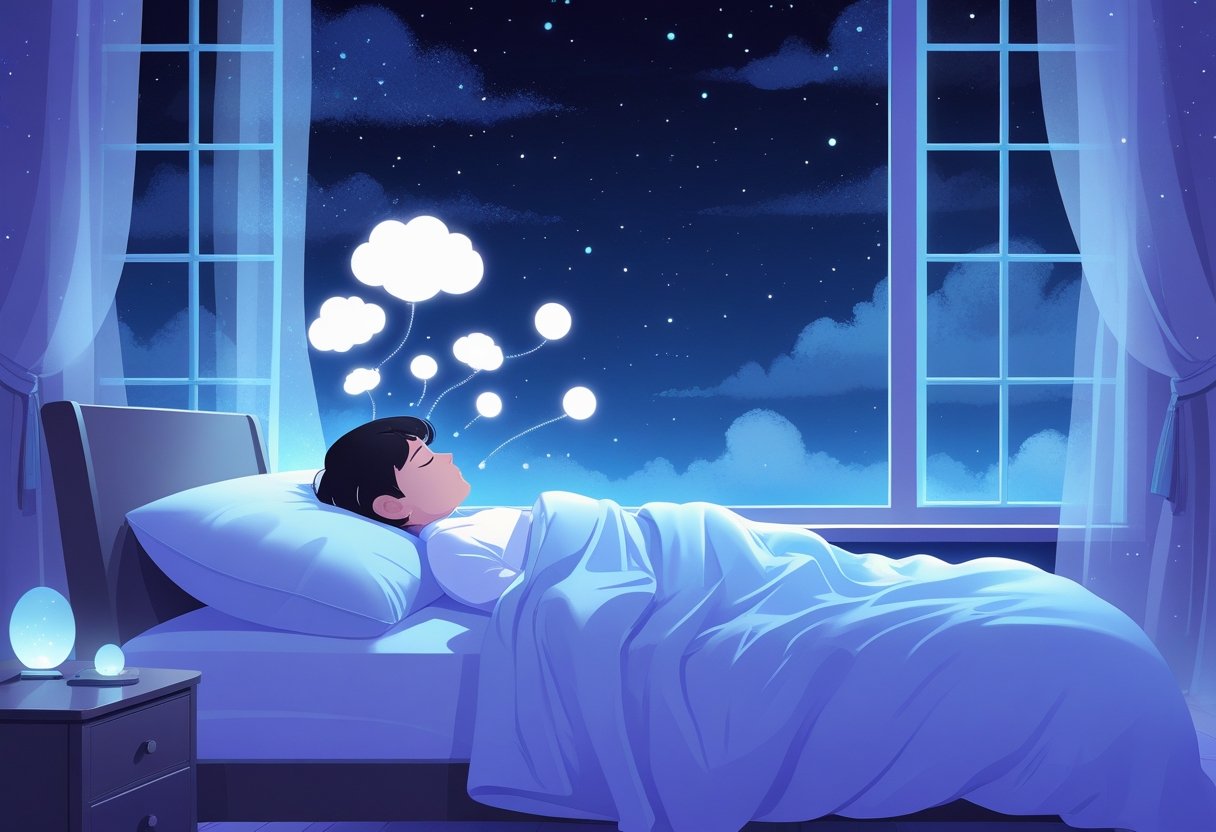
Types and Characteristics of Dreams
Dreams vary widely in form and content. Some happen regularly, others are rare or vivid. People experience different kinds of dreams, each with distinct features and effects on sleep and emotions.
Common Types of Dreams
People usually dream every night during the rapid eye movement (REM) stage of sleep. Dreams often include familiar places and people, but different times and settings can mix together. Some common themes are being chased, failing exams, or losing teeth. These dreams can reflect daily worries or problems the mind is trying to work through.
Recurring dreams happen when someone keeps having the same dream or theme. They can point to stress or needs that the mind is trying to process. Those who dream regularly have a mix of typical and recurring dreams. This variety helps the brain sort through emotions and memories.
Vivid Dreams and Nightmares
Vivid dreams feel stronger and more detailed than normal dreams. They can show up after poor sleep or stressful periods, when the brain catches up with intense REM sleep. These dreams can feel real and are easy to remember.
Nightmares are upsetting dreams that trigger fear or anxiety. They usually wake the person suddenly. Nightmares are common and mostly harmless unless they disturb sleep or daily life. Night terrors are different. They cause strong fear and physical reactions, mostly in children. Both vivid dreams and nightmares involve strong emotions and help the brain handle memories and fears.
Lucid Dreaming
Lucid dreaming happens when someone knows they are dreaming while asleep. Some people can even change what happens in the dream. This state is rare but can be trained with practice and focus.
Lucid dreamers can use it to solve problems or change nightmares. Studies have shown it’s possible to communicate with people during lucid dreams, hinting at ways it could help learning or therapy. Lucid dreaming shows how conscious thought and sleep experiences can connect, giving insight into how the mind works.
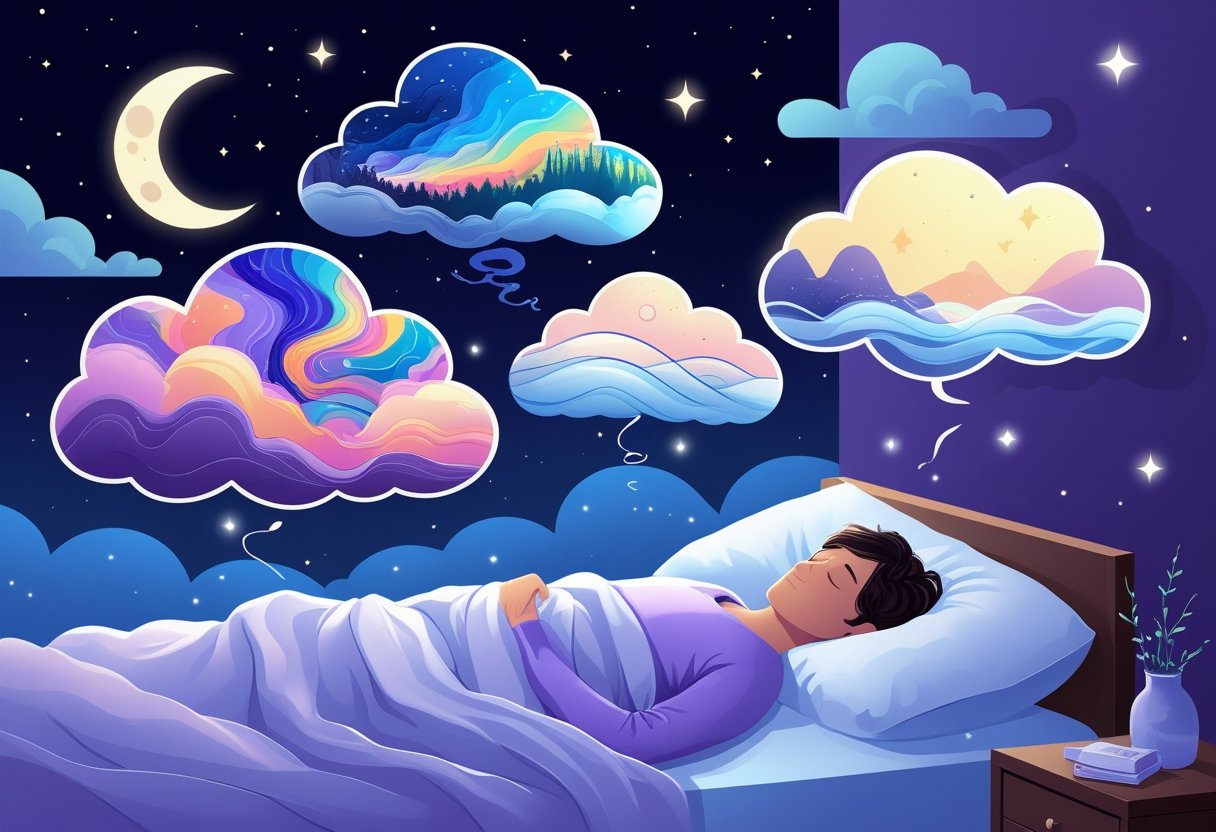
Purpose and Meaning of Dreams
Dreams are complex experiences during sleep that involve images, emotions, and sensations. Their purpose and meaning have been studied for decades. Various ideas and theories try to explain why we dream and whether dreams hold significance for daily life and health.
Do Dreams Have Meaning?
Dreams include pieces of a person’s daily life. People, places, and feelings from waking hours can appear in mixed or altered forms. Some experts think dreams show hidden thoughts or feelings. Others say dreams are random, reflecting brain activity without a clear purpose.
Dreams can trigger strong emotions. These feelings might help process memories or experiences. Still, no single explanation works for all dreams. Their strange and unpredictable nature makes it hard to assign definite meanings.
Theories on Why We Dream
Researchers have several ideas about why people dream. Some say dreams help store and strengthen memories by replaying events during sleep. Others suggest dreams allow people to work through emotions or imagine different outcomes.
Some theories describe dreaming as “mental housekeeping,” where the brain clears out unnecessary information. Others see dreams as a replay of recent experiences. Another view is that dreaming might happen simply because the brain is active during sleep, without a specific purpose. Each theory points to a possible reason for dreaming, but no one explanation is fully proven.
Are Dreams Important for Well-Being?
Dreaming mainly happens during REM sleep, a stage critical for brain health. This link suggests dreams support overall well-being. Dreams may help people manage stress or process difficult experiences. Nightmares can interrupt sleep and affect mood or thinking during the day. Positive or neutral dreams usually align with healthy sleep. Remembering dreams and thinking about them can improve self-awareness or mental health for some people.
Dreams, meaningful or not, are connected to healthy sleep and brain function.
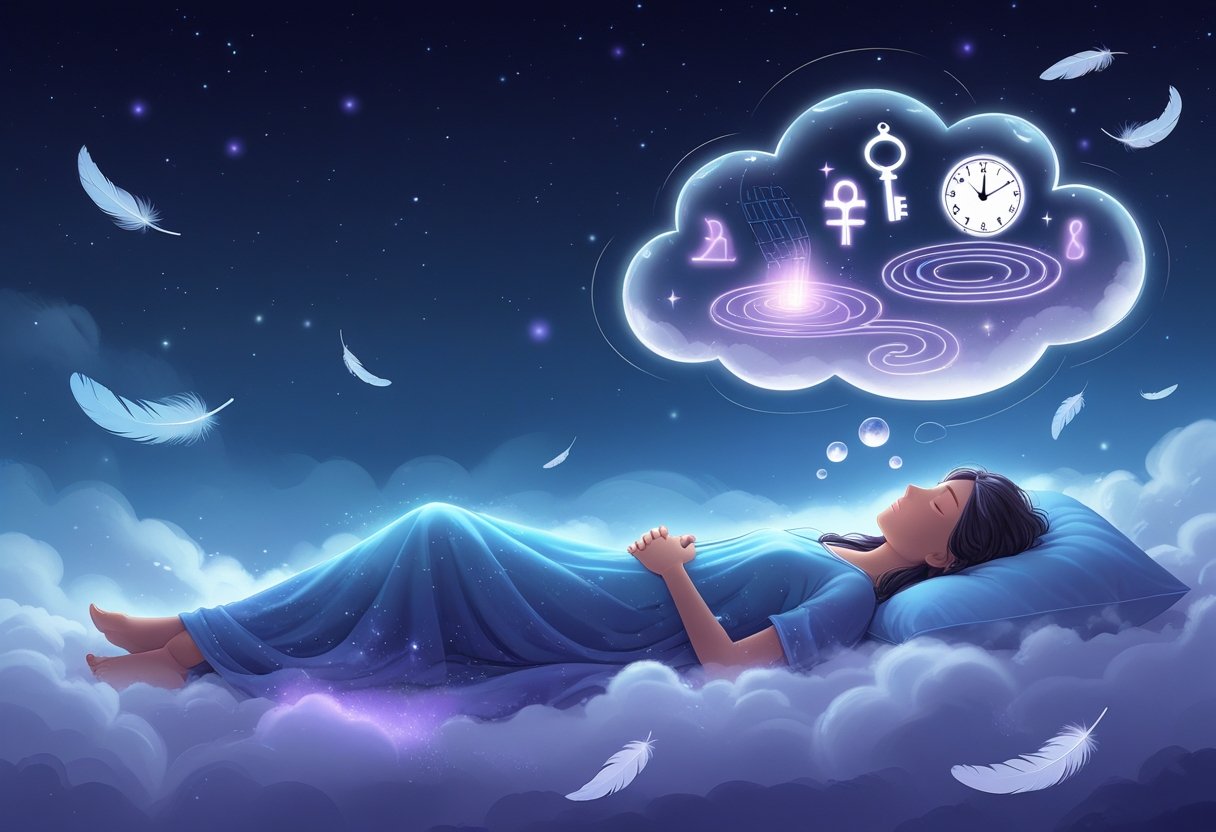
The Relationship Between Sleep, Dreaming, and Health
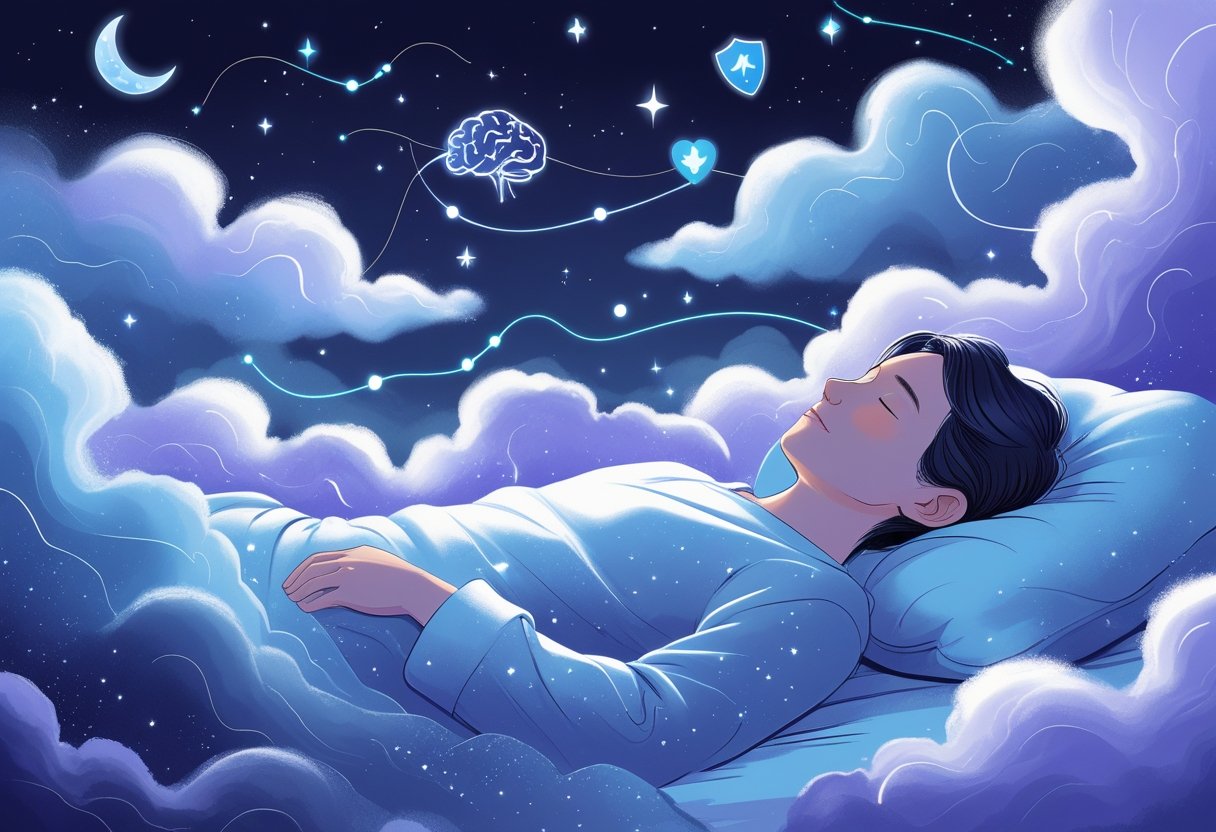
Sleep and dreaming are closely connected to mental and physical health. Dreaming plays a role in emotional balance and memory. The quality of your sleep can influence how clearly and vividly you dream. Sleep disorders can change dreaming patterns, which may affect overall well-being.
Impact of Dreams on Sleep Quality
Dreaming mainly happens during the REM (rapid eye movement) stage of sleep. This stage is important for rest and recovery. People who have regular REM dreams usually sleep better. Dreaming shows the brain is moving through normal sleep stages. Sleep without dreams, like deep non-REM sleep, is also important for physical repair.
Nightmares or upsetting dreams can interrupt sleep. This can lead to waking up tired. Positive or neutral dreams rarely break sleep cycles. Dreams alone don’t guarantee rest, but healthy REM dreaming supports it.
Dreams and Emotional Processing
Dreams help the brain process feelings and work through problems. While sleeping, the brain sorts through emotions from the day, especially during REM. Dreams let people express thoughts and fears in a safe space, which can ease stress and anxiety. Less dreaming or disrupted REM sleep can make emotional challenges harder to manage. Some treatments focus on improving dreams to help regulate emotions.
Vivid dreaming often follows strong emotional events. This shows how closely dreams are tied to emotional health.
Link Between Sleep Disorders and Dreaming
Sleep disorders affect how people dream. Insomnia can lead to fewer or broken dreams because REM sleep is disturbed. In narcolepsy, dreams can spill into wakefulness and cause hallucinations. Sleep apnea interrupts REM sleep repeatedly, which lowers dream recall and weakens sleep’s restorative effect. Mental health conditions, like PTSD, can bring frequent nightmares, harming sleep and overall health. Treating sleep problems can improve dream patterns and support better sleep.
Factors That Influence Dreaming
Dreams are shaped by many factors, including brain activity during sleep, emotional state, and individual differences. These elements affect how often people dream, the content of their dreams, and how well they remember them. Understanding these influences helps explain why dreams vary between people and across time.
What Causes Different Dreams?
Dreams reflect memories, emotions, and current concerns. The brain takes information from daily life and pieces it into dream scenes. Stress, anxiety, and things like medications can change the mood of dreams, sometimes making them stronger or unsettling.
Dreams during REM (rapid eye movement) sleep tend to feel more intense and emotional. Brain chemistry, including hormones like cortisol, and sleep cycles also shape how dreams appear. Early night dreams are usually more realistic, while later dreams may seem unusual or emotional.
Why Do Some People Dream More?
How often someone dreams or remembers dreams varies by person. Age, sex, personality, and sleep quality all matter. People who think about dreams positively or daydream frequently usually recall more of them.
Memory skills can affect how well dreams are remembered, but they don’t cause more dreams to happen. How people wake up and whether they write down their dreams can change recall. Interruptions in sleep or irregular patterns also influence dream frequency.
Dreams Across the Lifespan
Dreaming changes as people get older. Young adults tend to remember dreams more than older adults. Children’s dreams are simpler and less vivid, growing more detailed during adolescence.
In older adults, less REM sleep can lower how often dreams happen and how well they are recalled. Gender also plays a role, with women generally remembering dreams more than men. Changes in brain function and sleep quality over time affect how dreams are experienced.
How the Right Mattress Shapes Sleep and Dream Quality
Your mattress affects both sleep and dreams more than most people realize. A comfortable, supportive mattress eases aches and lets you sleep longer without waking. When sleep is deeper, dreams appear more vivid and memorable. A mattress that supports your spine properly helps muscles relax. If your body stays supported, tossing and turning decreases. Less movement at night keeps sleep cycles steady, which allows dreams to stay clearer and more distinct.
Temperature matters as well. Mattresses made from breathable or cooling materials prevent overheating. Staying cool helps your body maintain consistent sleep, which improves both the length and clarity of dreams.
Different sleepers need different support. Side sleepers often benefit from softer mattresses to relieve pressure on hips and shoulders, while back sleepers require firmer support to keep the spine aligned. Choosing a mattress that fits your sleep style encourages calmer, more restorative rest.
Key factors to consider when choosing a mattress:
- Comfort: Lets the body relax and reduces tossing at night
- Support: Keeps the spine aligned and eases aches
- Temperature: Prevents overheating and sleep disruption
- Material: Affects durability and overall feel
Hybrid models, like SweetNight Twilight Hybrid Mattress, balance softness and support, helping the body feel steady while the mind enjoys uninterrupted sleep. Matching mattress features to personal needs creates a sleep environment that supports deeper rest and more vivid, memorable dreams.
The SweetNight Twilight Hybrid Mattress combines individually wrapped coils with memory foam layers to provide both support and pressure relief. Its hybrid design minimizes motion transfer, which helps both partners sleep undisturbed. With breathable foam and a medium-firm feel, it adapts to different sleeping positions, keeping the body comfortable and aligned throughout the night.

Frequently Asked Questions
Sleep happens in stages. Each stage has different brain activity and body reactions. Most dreams occur during one stage, which affects how clear and long they feel. Emotions, memory, and awareness of dreams are linked to how we sleep.

